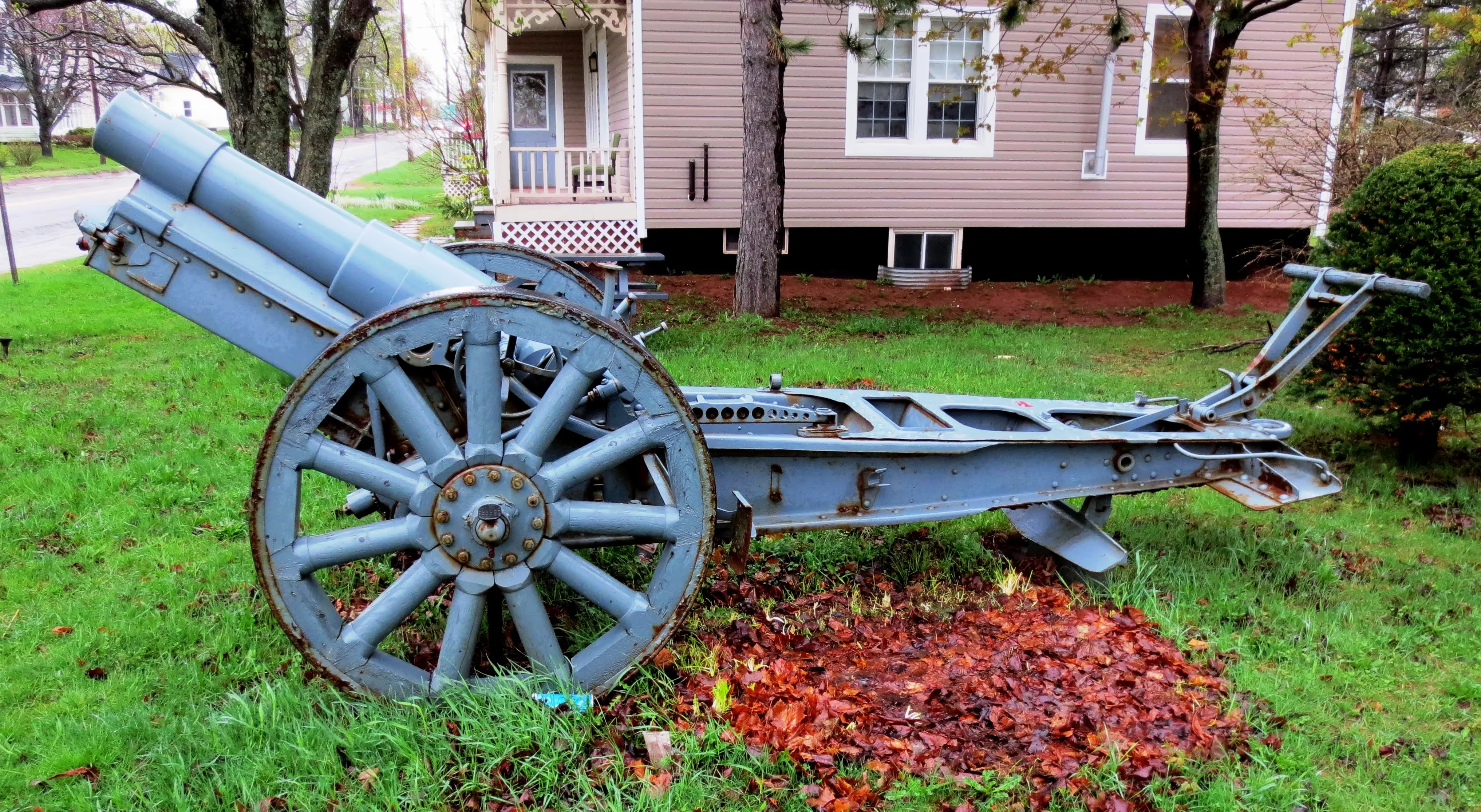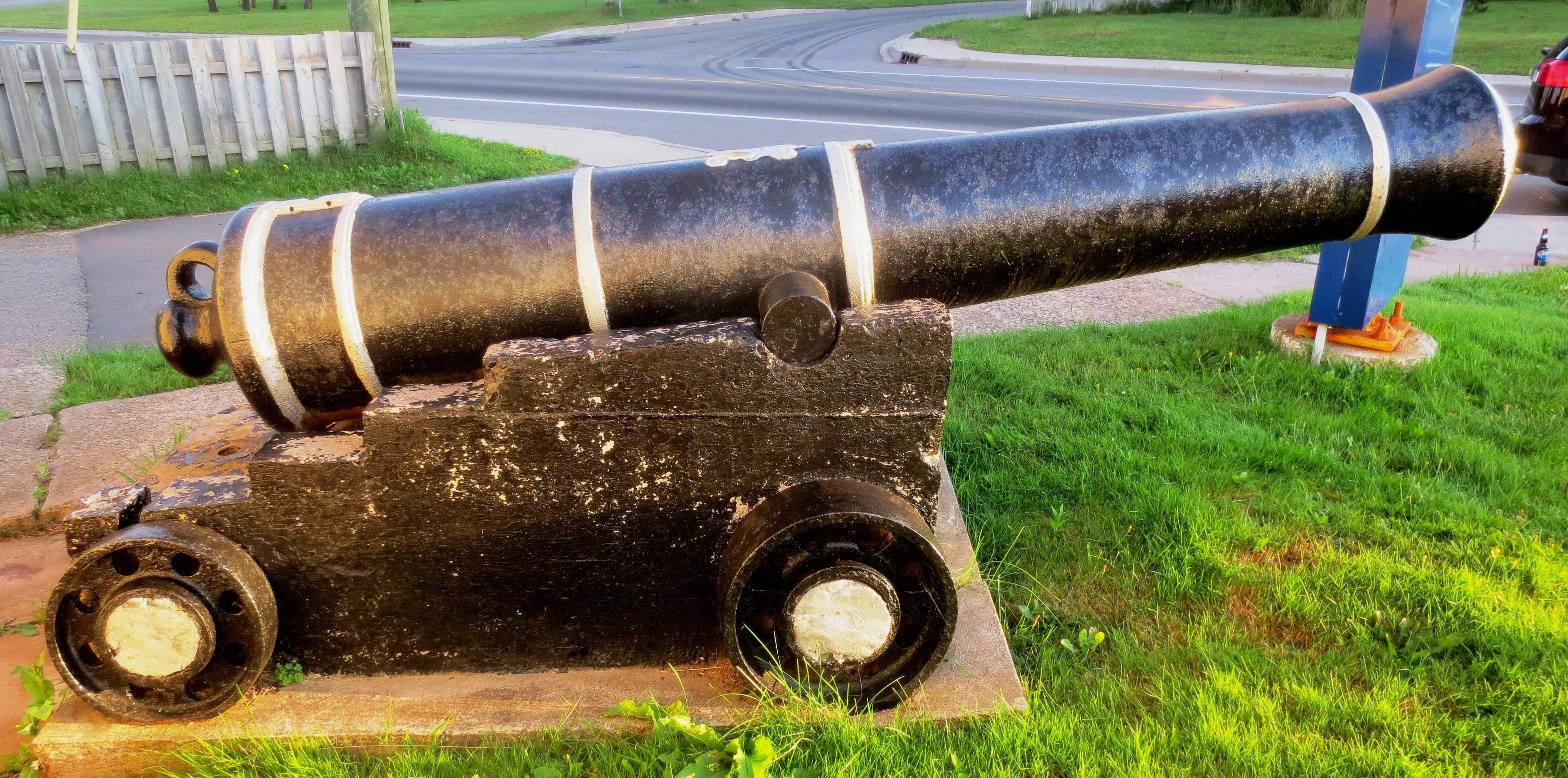Artillery in Canada (8) Prince Edward Island: Kensington, Lennox Island, Miscouche, Montague, Mount Stewart, Souris, and Tignish
Artillery on Prince Edward Island, Kensington, Lennox Island, Miscouche, Montague, Mount Stewart, Souris, and Tignish
The aim of this website is to locate, identify and document every historical piece of artillery preserved in Canada. Many contributors have assisted in the hunt for these guns to provide and update the data found on these web pages. Photos are by the author unless otherwise credited. Any errors found here are by the author, and any additions, corrections or amendments to this list of Guns and Artillery in Canada would be most welcome and may be e-mailed to the author at [email protected].
For all official data concerning the Royal Regiment of Canadian Artillery, please click on the link to their website:
Royal Regiment of Canadian Artillery Website
Note: Back in the day, artillery in Canada was referred to by its radio call sign "Sheldrake". It is now referred to by its "Golf" call sign. (Acorn sends)
Prince Edward Island
Kensington

(Library and Archives Canada Photo, MIKAN No. 3397897)
German First World War 15-cm schwere Feldhaubitze 1902 (15-cm sFH 02), captured by Canadians, Battle of Amiens, Aug 1918.

(City of Vancouver Archives Photo, AM54-S4-: Gr War P42)
German First World War 15-cm schwere Feldhaubitze 1902 (15-cm sFH 02), War Prize, 1918.




(Author Photos)
German First World War 15-cm schwere Feldhaubitze 1902 (15-cm sFH 02), (Serial Nr. 86), A.G. Essen, 1904. This sFH 02 was likely captured ca 1918 by a Battalion of an Infantry Brigade in a Canadian Division with the Canadian Expeditionary Force (CEF), in France. It was originally allocated to Charlottetown. The sFH 02 is on display outside the Kensington Veteran’s Memorial Military Museum, next to Royal Canadian Legion Branch No. 9.
The 15 cm schwere Feldhaubitze 1902 (15 cm sFH 02) was a German heavy field howitzer introduced in 1903. It was the first artillery piece to use a modern recoil system in the German Army. Some 416 were in service at the beginning of the war. Its mobility, which allowed it to be deployed as medium artillery, and fairly heavy shell gave the German army a firepower advantage in the early battles in Belgium and France in 1914 as the French and British armies lacked an equivalent.

(Library and Archives Canada Photo, MIKAN No. 3403105)
German First World War 7.92-mm Maxim Spandau MG 08 Machinegun assembly, May 1917.

(Author Photo)
German First World War 7.92-mm Maxim Spandau MG 08 Machineguns (two), (Serial Nr. corroded). This MG 08 mounted on a Schlitten stand was likely captured ca 1918 by a Battalion of an Infantry Brigade in a Canadian Division with the Canadian Expeditionary Force (CEF), in France. Two machineguns were allocated to Montague after the war, (Serial Nr 2085) captured on 10 Oct 1917 by the 44th Battalion (Manitoba), 10th Infantry Brigade, 4th Canadian Division, Canadian Expeditionary Force (CEF), at Hill 145, Vimy, France; and (Serial Nr. 9021) captured on 9 Aug 1918 by the 4th Battalion (Central Ontario), 1st Infantry Brigade, 1st Canadian Division, CEF, 1/2 km North of Beaufort, France.
Lennox Island.

(Library and Archives Canada Photo, MIKAN No. 3397953)
German First World War 10.5-cm Feldhaubitze 98/09 captured by Canadians, Arras, France, Aug 1918.

(Library and Archives Canada Photo, MIKAN No. 3395608)
German First World War 10.5-cm Feldhaubitze 98/09 captured by Canadians, at Vis en Artois, France, Sep 1918.



(Author Photos)
German First World War 10.5-cm Feldhaubitze 98/09 (10.5-cm FH 98/09), (Serial Nr. 223), Rh MF, 1911. This gun was captured ca 1918 by the 27th Battalion (City of Winnipeg), 6th Infantry Brigade, 2nd Canadian Division, Canadian Expeditionary Force (CEF), in France. This FH 98/09 was originally allocated to Grand River. It is on display next to the cenotaph facing the waterfront.
The 10.5 cm Feldhaubitze 98/09 (10.5-cm FH 98/09), a short barreled (16.25 cm) 105-mm howitzer, also referred to as the 10.5 cm leichte Feldhaubitze (light field howitzer) 98/09, was used by Germany in the First World War and after. It had a maximum range of 6,300 metres (20,700 ft). It was originally built by Rheinmetall as the 10.5 cm Feldhaubitze 98, an old-fashioned, fixed-recoil weapon delivered to the German army in 1898; between 1902 and 1904, it was redesigned, by Krupp, with a new recoil mechanism and a new carriage. However, it wasn't accepted for service until 1909, hence the ending designation 98/09. Existing weapons were rebuilt to the new standard. As usual, two seats were attached to the gun shield. There were 1,260 in service at the beginning of the First World War.
Miscouche




(BK-Hunters Photos)
French possibly 24-pounder Smoothbore Muzzleloading Gun, heavily corroded. This gun was recovered from a French frigate that sank during the siege of Louisbourg in 1758. The cannon was retrieved from the harbour in 1900. From 9 Nov 1901, the Natural History Society of Prince Edward Island had it on display in front of Province House in Charlottetown. In 1965, while Province House was being renovated, the cannon was entrusted to Parks Canada and stored at the Port-la-Joye/Fort-Amherst National Historic Site. In the fall of 1999, the cannon was loaned by Parks Canada to the Acadian Museum in Miscouche to commemorate the ties which once existed between Île Saint-Jean and Louisbourg. Its new site was officially inaugurated on 12 Aug 2000. It is located along Highway 2 at the eastern end of Miscouche, near the Acadia Museum.
Montague




Cast Iron possible 9-pounder Smoothbore Muzzleloading Gun, 4-inch bore, heavily corroded, no visible markings. A plaque stating "This cannon was used at Point De Roma (Brudinell Point), 1737-1745, to defend Georgetown Harbour. In 1965, a gift to No. 8 Branch by Ft. Lt. Rodd M. Martin". The gun stands beside the cenotaph in front of the Royal Canadian Legion at 15 Douses Road.
Mount Stewart

(Library and Archives Canada Photo, MIKAN No. 3194730)
German First World War 10.5-cm Feldhaubitze 98/09, captured by the 17th Battery C.F.A. and put into action firing on the retreating Germans during the Battle of Vimy Ridge.

(Library and Archives Canada Photo, MIKAN No. 3521875)
German First World War 10.5-cm Feldhaubitze 98/09, captured by the 17th Battery C.F.A. and put into action firing on the retreating Germans during the Battle of Vimy Ridge.

(Alex Comber Photo)


(Author Photo)
German First World War 10.5-cm Feldhaubitze 98/09, (Serial Nr. 438). This gun was captured on 27 Sep 1918 by the British 11th (Northern) Division "Imperials", operating with the Canadian Expeditionary Force, SW of Epinoy, France. The FH 98/09 was originally allocated to Charlottetown, it is now located beside the cenotaph at Mount Stewart, PEI, missing its wheels. The Gunner's shield shows evidence of penetration.
Souris





(Author Photos)
Blomefield Cast Iron 24-pounder 50-cwt Smoothbore Muzzleloading Gun, weight 48-0-21? corroded (5,397 lbs), Samuel Walker & Company of Rotherham, England (WCo) on left trunnion, (Serial No. 91?) on right trunnion, King George III cypher, broad arrow mark, mounted on a wood naval gun carriage in front of the Royal Canadian Legion Branch No. 3.
Summerside Artillery is listed on a separate page on this web site.
Tignish

(Library and Archives Canada Photo, MIKAN No. 4234806)
105-mm C1A1, RCHA training in Germany. (Library and Archives Canada Photo.
105-mm C1A1 Howitzer, CDN unknown, CFR unknown. This gun stands in front of the Royal Canadian Legion at 221 Phillip St.





